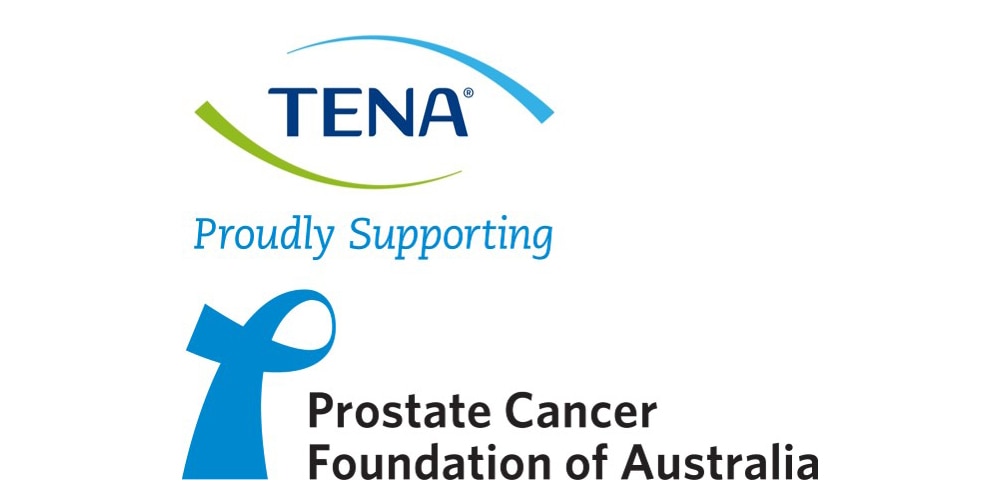The prostate is a small reproductive gland only found in men and it sits just below the neck of the bladder and surrounds the bladder outlet.
The prostate and incontinence
Why does the prostate affect continence?
The prostate is a small reproductive gland only found in men and it sits just below the neck of the bladder and surrounds the bladder outlet. Its role is to make fluid that protects and feeds the sperm. Urine passes from the male bladder through an internal sphincter, past the prostate, into the urethra, and it then passes through an external sphincter (which is part of the pelvic floor) and is expelled. In young men the prostate is the size of the walnut and it doubles in size between ages 21- 50 years, and then doubles again between ages 50 – 80 years. The reason for this growth is not fully understood.1 As the prostate enlarges it makes the urethra narrower and puts pressure on the neck of the bladder, which can cause incontinence and other urinary symptoms.
This page will expand on the following points;
Symptoms of an enlarged prostate
Types of prostate related incontinence
Does incontinence resolve post surgery?
What are the Stats?
- It is the most commonly diagnosed cancer in men2
- More men die of prostate cancer than women die of breast cancer in Aust2
- Approximately 200,000 men are living with prostate cancer each year3
- Approximately 20,000 are diagnosed with prostate cancer each year2
- It is the most commonly diagnosed cancer in men4
- More men die of prostate cancer than women die of breast cancer in NZ4
- Approximately 3,000 men are diagnosed each year4
An estimated 30% of men who visit the GP are affected by incontinence, yet more than two thirds do not discuss the issue due to embarrassment. Many perceive that urine leakage only affects women and the elderly5
Common prostate conditions
Benign Prostatic Hyperplasia (BPH)
This is benign enlargement of the prostate that occurs as men age. One in four men may need surgery for this. It does not lead to cancer6
Prostate Cancer
This is a very common cancer in men and is usually diagnosed on rectal examination (the prostate sits near the rectum, and if enlarged it can be felt) and a PSA blood test. Depending on the stage of the cancer when it is diagnosed will determine the prognosis & treatment.
Prostatitis
This is swelling and soreness of the bladder which could occur due to an infection and is more common in young men6
Symptoms of an enlarged prostate
- a slow or interrupted stream
- difficulty starting to pass urine
- urinary frequency
- urinary urgency
- a feeling of incomplete emptying
- urine leakage (incontinence)
The types of prostate related incontinence men may experience
Stress Incontinence
This can occur due to a weakened pelvic floor (yes this can happen in men too!). Unless exercised, this muscle can weaken over time, losing strength and flexibility. It can also occur as a result of chronic constipation or being overweight. Bladder leakage can occur due to increased abdominal pressure on the pelvic floor and on the bladder. Such as when laughing, coughing, sneezing, lifting, exercising.
Urge Incontinence
An overactive bladder can be caused by the bladder working extra hard to get past the narrowing of the urethra due to an enlarged prostate. An overactive bladder can tighten without your control, causing an urgent need to pass urine. After surgery men may still have an urgent need to pass urine, and it could get worse for a few weeks, until the bladder returns to normal.
Overflow Incontinence
Overflow incontinence refers to a constant or erratic urine flow. It occurs when the bladder is unable to empty properly, resulting in frequent leakage of small amounts of urine, often day and night. It can be caused by a tumour within the bladder or an enlarged prostate that is either benign or malignant. The bladder does not empty completely which can lead to urinary retention or the risk of a bladder infection.
Post void dribble
Medically known as post-micturition dribble or PMD, this is the loss of a few drops of urine following the completion of voiding, leaving some urine in the urethra, despite the bladder feeling empty. It tends to be caused by the weak contraction of pelvic floor muscles surrounding the urethra. Also very common when the prostate is enlarged7.
Does incontinence resolve post- surgery?
According to Andrology Australia, urinary problems start improving soon after the catheter is removed post-op, while for others (and generally) it can take 6 - 12 months after surgery for normal bladder function to return and urinary problems to be resolved. A small percentage of men will experience permanent incontinence. Many factors can affect continence following surgery such as a person’s weight, the stage of the cancer, the surgical technique used, or if urinary problems were present pre-surgery8
TENA research conducted in 2014 found that many men are more embarrassed than women with incontinence. Due to a fear of humiliation and the threat to their masculinity, they try to cope with it on their own, do not seek help until it has a significant impact on their health or lifestyle, and they create their own “home style” strategies to cope4
Tips to help you raise the topic of incontinence:
Incontinence can be a delicate subject for all of us, not just for the people affected. Due to the stigma and embarrassment associated with the condition, it can be difficult for patients/clients to discuss the topic.
Treatment options to manage prostate- related incontinence
Medication
Certain alpha- blocker medications can be used. These medications relax the bladder neck muscles and muscle fibres in the prostate and make it easier to empty the bladder. Examples include tamsulosin, alfuzosin, silodosin, doxazosin and terazosin9
Bladder re-training
A bladder re- training program could be helpful if surgery is not required (and post- surgery also). It aims to train the bladder to hold more urine to reduce leakage, feelings of urgency and to manage an over- active bladder
Pelvic floor exercises
Most men are unaware they have pelvic floor muscles. Improving the strength of these muscles will improve sphincter control and can reduce leakage. If a man needs surgery these exercises are usually recommended pre and post- surgery.
Go to Continence Foundation of Australia (CFA) to find a continence physiotherapist
Healthy bladder tips to reduce or prevent incontinence
Diet, exercise, body weight and smoking can all affect bladder control.
Prostate surgery
The type of surgery used to treat the prostate will depend if it is BPH or cancer, and which stage of cancer. There are many options for surgery.
TENA assistance for Men
TENA PROSTATE KITS
TENA prostate kits are ideal to give to patients following prostate surgery. The kit contains a sample of TENA men’s pads, TENA barrier cream and a product information brochure. This enables men to trial a range of products and they can then purchase with confidence
As a TENA assist member you can order kits and other tools when you need them.
Prostate kit includes:
- TENA men pad samples
- TENA barrier cream
- TENA information brochure
TENA MENS RANGE
TENA has created a range of continence products specifically designed for men. They are available in 6 levels of absorbency.
- TENA Men’s Shield – a black slim-line pad
- TENA Pad Levels 1, 2, 3 - a unique “cricket box” shape in line with the male anatomy, offering a range of absorbency, and are discreet in style
- TENA Level 4 - an absorbent pull- up pant like regular underwear in masculine grey stripes or navy blue
Samples for Home Care Providers
Order samples at TENA assist
TENA is proudly supporting the PCFA
Providing much needed funds for further research. It will also enable TENA to help more men to avoid or minimise incontinence via education programs.


TENA is proudly supporting the PCFA
Providing much needed funds for further research. It will also enable TENA to help more men to avoid or minimise incontinence via education programs.
Useful links
The Continence Foundation of Australia (CFA)
www.continence.org.au
National Continence Helpline 1800 33 00 66
The Department of Health Australia
https://www.bladderandbowel.org
The Prostate Cancer Foundation Australia
https://www.prostate.org.au/
Cancer Australia
https://www.canceraustralia.gov.au/cancer-types/prostate-cancer/treatment
The Australian Government website - HealthDirect
https://www.healthdirect.gov.au/questions-to-ask-before-surgery
The Continence Foundation of New Zealand
www.continence.org.nz
National Continence Helpline 0800 650 659
The Department of Health New Zealand
https://www.health.govt.nz/
References
- https://www.healthymale.org.au/mens-health/prostate-enlargement-bph
- https://www.prostate.org.au/awareness/general-information/what-you-need-to-know-about-prostate-cancer/
- PCFA statistics 2019
- https://prostate.org.nz/prostate-cancer/
- Byles & Chiarelli, 2003: “Help seeking for urinary incontinence: a survey of those attending GP waiting rooms” Australian and New Zealand Continence Journal).
- https://www.continence.org.au/pages/men.html
- TENA Research 2014
- https://www.healthymale.org.au/mens-health/prostate-enlargement-bph#resources
- https://www.webmd.com/drugs/2/drug-1592/tamsulosin-oral/details









